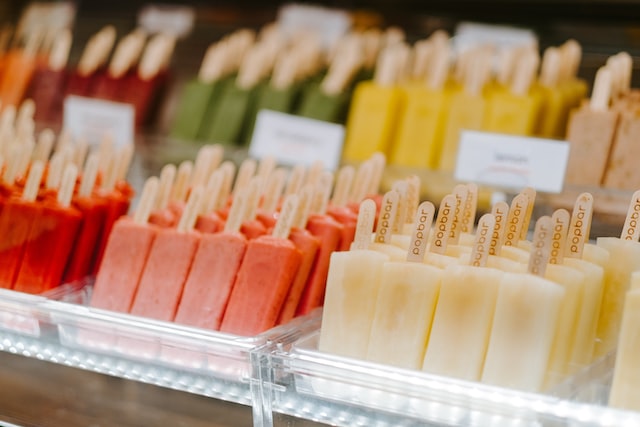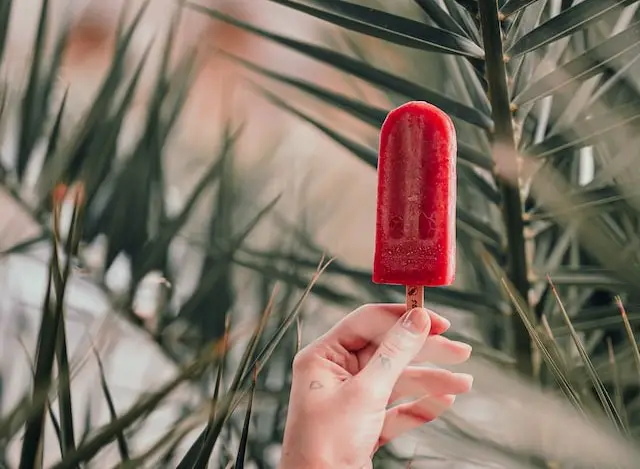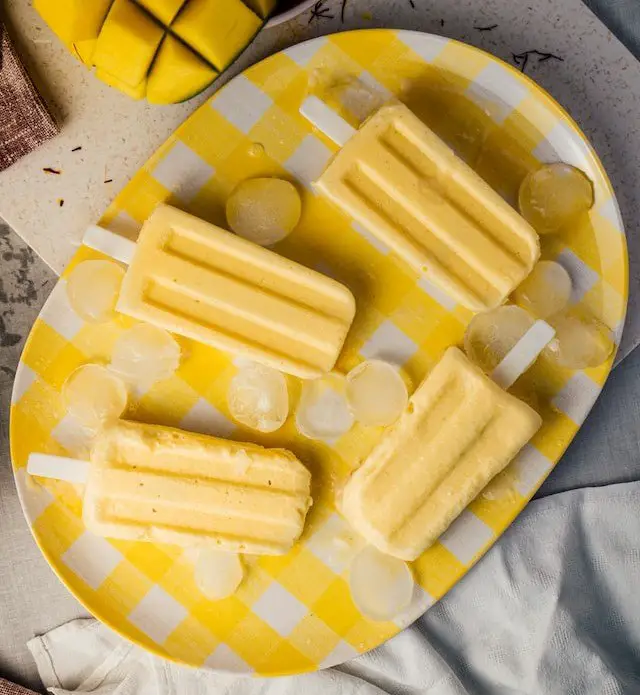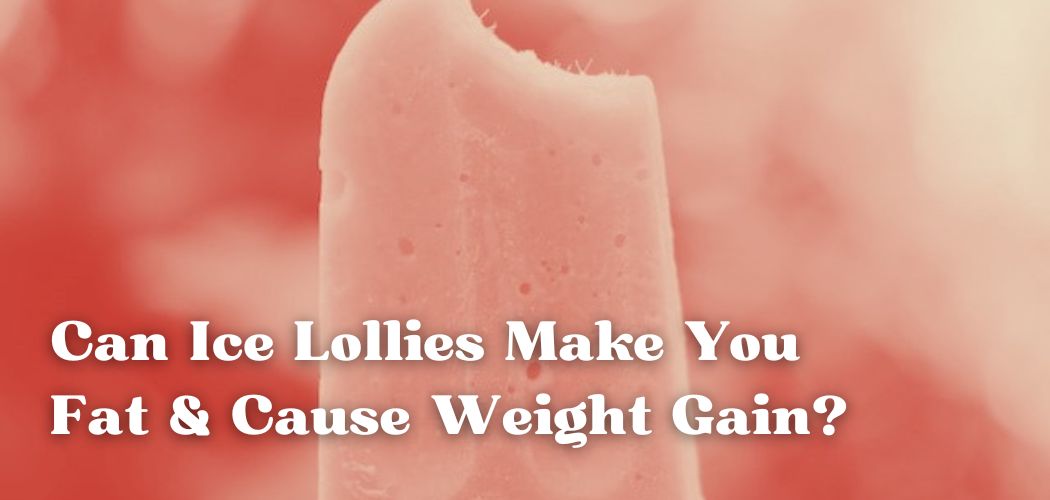An ice pop, or ice lolly, is a frozen liquid-based treat on a stick.
In contrast to ice cream and sorbet, which are churned while freezing to prevent the development of ice crystals, an ice lolly is “quiescently” frozen, or frozen at rest, and solidifies into a block of ice.
The stick serves as the item’s handle. The frozen item would be a freezie if it lacked a stick.
Ice lollies are a wonderful summer treat. They are typically tiny and come in convenient single-serving sizes.
Therefore, they are ideal for portion control. In addition, several fruit-flavored popsicles tout an impressive nutritional content.
But are all ice lollies as advertised?
We consulted some nutritional experts to determine which ones would complement a healthy diet.
The nutrition facts label is an informational goldmine.
Sadly, many individuals require a map to traverse it. Things can become somewhat confusing.
Moreover, the fronts and backs of the packaging frequently contain aggressive statements. These assertions may detract from the panel’s actual facts.
Therefore, let’s assess these popsicles.
Contents
Nutritional Specifics
Despite the fact that many ice lollies are low in calories, they are not nutritional snacks. A normal ice lolly has between 30 and 50 calories but lacks vitamins and minerals, diminishing its nutritional value.
High In Sugar
An ice pop’s high sugar content is another disadvantage of giving one to your youngster. One small frozen pop can contain up to 8 grams of added sugar, or roughly 2 teaspoons.

According to experts, your child’s risk of unhealthy weight gain, obesity, and tooth decay increases when he consumes a diet high in added sugar. While an occasional frozen pop will not impair your child’s health or weight, consuming them frequently might.
Symptoms Of Eating Disorders
They are low in calories, fat-free, and in some cases, sugar-free. They also do not cause satiety.
What’s not to like, particularly if you have an eating disorder? Some people have restricted themselves to two popsicles every day in an effort to lose weight.
There are numerous online message boards devoted to eating disorders where entire discussions are devoted to the miracle of popsicles. They typically contain recommendations for the best sugar-free and calorie-free beverages that can be frozen into bars.
Calorie Density
A portion of food is more calorie-dense when it contains more calories per unit of weight. For example, cheese is extremely high in calories, whereas lettuce is extremely low in calories.
Food with a high-calorie density has many calories per unit of weight, whereas food with a low-calorie density contains fewer calories per unit of weight.
Let’s examine an ice lolly. Each strawberry-flavored Edy’s Outshine Fruit bar contains 70 calories and weighs approximately 2.68 ounces. 70 divided by 2.68 equals 26.12, which indicates that this popsicle contains approximately 26 calories per ounce.
Actual strawberries, meanwhile, contain nine calories per ounce.
Keeps You Hydrated
When it is extremely hot outside and you have to be outside, you face the danger of becoming dehydrated. Rapid dehydration can be caused by high temperatures, although most individuals do not realize they are dehydrated until they begin to feel dizzy.
When it’s extremely hot outside, consuming a popsicle can be a wise decision. Popsicles are essentially flavored frozen water, so they are hydrating. Given that they are also sugary, they deliver instantaneous energy and a sense of liveliness.
Ice Lollies As Desert
Essentially, a popsicle is flavored frozen water on a stick. It is often low in calories, far less than ice cream, for instance, and thus it can be easily incorporated into a weight loss diet.
A standard dish of ice cream contains about 250 calories, but one fruit popsicle contains fewer than 100.
And it is much healthier than a brownie, a muffin, a donut, a slice of pie or cake, or true ice cream. It will satisfy your sweet tooth without ruining your diet.
Ice Lollies Or Ice Cream?
Which is better? Generally speaking, popsicles contain less fat than ice cream, but ice cream is a chilly comfort meal. While most individuals prefer one form of frozen food over another, some choose popsicles due to their lower calorie content.
Are they vegan? Ice lollies are a trademarked phrase for a specific brand of frozen ice on a stick, despite the fact that most people use it as a generic term. In any case, popsicles and ice pops are typically vegan (especially if they are fruit based).

Alongside this, Are sugar-free ice pops keto-friendly? Sadly, no. Most popsicles are high in sugar and are not suitable for a ketogenic diet.
Even sugar-free popsicles contain components that are not keto-friendly, such as maltodextrin (corn), and may contain a significant amount of carbohydrates.
Helps With Fever
An ice lolly will not truly reduce your fever, but it will hydrate you and possibly make you feel better. It is crucial to consume as much liquid as possible when we have a fever, but this can be challenging because a fever is not favorable for eating or drinking.
However, a tangy and sweet, fruit-flavored popsicle can be consumed even when a fever suppresses the appetite.
It’s not food, so it won’t feel heavy on the stomach, but it will help hydrate and improve vascular function with electrolytes, restore energy levels for increased vitality, and possibly restore a little bit of appetite.

Orange juice and lemon juice are flavors that might induce a feeling of hunger. Pineapple contains vitamin C, which stimulates hunger.
Sweet and sour cherry juice, red and black cherry juice, blackberry, and blueberry all contain antioxidants with demonstrated anti-inflammatory properties.
While watermelon, orange juice, and kiwifruit popsicles provide electrolytes to strengthen the cardiovascular system.
Conclusion
Ice lollies or ice pops are not exactly healthy foods. Both sweets are high in sugar, and both are likely to include several additives.
Indulging in either seasonal treat in moderation is unlikely to create difficulties, and there is no need to eliminate them entirely. Simply watch your calorie intake, and whenever feasible, choose foods with the fewest additives.
However, if ice lollies are consumed in excess, it might lead to a gain in weight.
